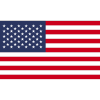A Historical Timeline of Fashion and Shoes
A Historical Timeline of Fashion and Shoes
Although humans need clothing for protection and modesty, clothing has also been a means of indicating a person's status and position in society for centuries. Many people use clothing as a way of communicating their values and style, too. Some aspects of clothing styles have remained relatively unchanged, while others have changed due to newer technology, fabrics, and trade routes.
Ancient Egyptian
The ancient Egyptians lived in a desert environment, so their clothing had to be lightweight and light in color for comfort. Both linen and cotton were ideal fabrics for this climate. High priests and members of royalty usually wore clothing made of silks and finer linens. Men typically did not wear shirts; they wore loincloths fastened to a belt or a long robe. Women wore flowing sheets of fabric that were draped so they looked like long robes. Both men and women wore sandals made of reeds or leather, and those with the funds added ornate jewelry to their outfits.
Ancient Roman
Both men and women in ancient Rome wore tunics and togas. Men's tunics were knee-length, and women's tunics were floor-length. Women's garb was similar, but it featured two separate pieces of fabric that attached with pins and a belt. Bridal fashion included decorated tunics and red veils, and married women wore a stola over a tunic. Upper-class Romans wore silk and fancy jewelry made with precious metals as a status symbol. Romans were also known for their preference for deep-hued fabrics, also a status symbol.
- Clothing of Men and Boys: Men and women in Rome wore clothing that was quite similar, usually including two or three articles for each person.
Medieval/Byzantine
Byzantine people liked fabrics in rich colors and patterns, and they especially preferred silks if they could afford them. Clothing was worn loosely, often layered over multiple tunics and cloaks. Ancient Roman styles such as stolas and togas continued to be popular, and women's outfits usually covered their entire bodies, with veils or thicker fabric covering their hair. In Western Europe during the medieval era, women also wore many layers of fabric. Men might wear simple hose and a jacket. Those with money liked to dress in silk and fine linens, and poorer people wore wool.
- Fashion in the Middle Ages: People in the Middle Ages used clothing to identify their position in society.
- Clothes in Medieval England: Wealthier people in the Middle Ages had clothing made out of better materials.
Renaissance
During the Renaissance, rules of dress were very strict. Working-class people dressed in wool or rough linen because these fabrics were inexpensive and easy to wear while working. Those in rich families and the nobility liked more expensive fabrics with rich colors and prints. Women wore gowns with tight bodices, large skirts, and full sleeves. Men wore clothes that showed off their physical attributes. On special occasions, those in the upper echelons of society would wear even fancier outfits.
- Renaissance Women's Clothing: Women's dresses during the Renaissance often had detachable sleeves, which were sometimes handed down in a family.
18th and 19th Centuries
During the 18th and 19th centuries, people were focused on formality and decorum. Women dressed very conservatively with high necklines and long sleeves. Fashion moved away from tight corsets and large hoop skirts to simpler dresses that highlighted women's natural figures. Men wore trousers or breeches, starched shirts, and formal jackets. Sometimes, men's collars extended upward instead of downward. Women in high society often wore elaborate hats.
- Women's Clothing: During the 18th century, women's fashion became softer, lighter, and prettier. Women wore pastels, and embroidery and frills were common.
1900-80
Technology advanced exponentially between 1900 and 1980, and this had a direct impact on changing fashion trends.
- 1920s: This decade was known for a departure from formal, Victorian fashion. Clothing became informal and even provocative. Skirts were straight and shorter. Men wore tailored, pinstriped suits, silk shirts, and fedora hats.
- 1930s: Women's dresses highlighted the feminine silhouette, hemlines got longer, and patterns were bright and busy. Men's suits were tailored to make their torsos look bigger with trousers that were creased and cuffed.
- 1940s: The war led to fashion changes for both men and women. Women's clothing became more utilitarian in nature with squared shoulders, narrowed hips, and hems just below the knee. Men's suits didn't change much in shape, but extra features such as pocket flaps, vests, pleats, and cuffs were removed to conserve fabric.
- 1950s: Women's clothing during this decade had narrow waists, full skirts, and rounded shoulders. Women also wore blouses and jeans. Men wore close-fitting suits, skinny ties, trousers, bowling shirts, vests, and saddle shoes.
- 1960s: Women's fashion was heavily influenced by Jacqueline Kennedy during this decade. Skirt suits were popular, and hemlines rose to the upper thigh for the first time. Men's fashions relaxed, and ties, collars, and lapels got wider. Sports shirts became popular, and bell-bottoms debuted by the end of the decade.
- 1970s: Comfort was a priority during this decade, and both men and women adopted the hippie look with bright colors and bold patterns. Women wore midi- and maxi-length dresses, peasant blouses, and jumpsuits. Men wore leisure suits, jeans, and sweaters.
1980 to Present
Starting with the 1980s, modern fashion took a turn with bright, synthetic fabrics.
- 1980s: The 1980s was a bold decade with bright colors for everyone, poofy skirts and shoulder pads for women, and power suits for men. Men often wore denim jeans and jean jackets together, and track suits were also popular.
- 1990s: The 1990s was a strong decade for denim, turtlenecks, and leggings with oversized shirts or sweaters. Men favored straight-leg jeans, camouflage pants, khakis, and overalls. Skater fashion also became popular, including loose-fitting cargo shorts and T-shirts with sneakers.
- 2000s: Fashion trends in the new millennium included leather, metallics, chunky shoes, and statement shirts. Both men and women filled their wardrobes with denim, low-rise flared jeans were popular, and off-the-shoulder tops debuted for women.
- 2010s: Waistlines came back up in the 2010s, with women wearing more high-waisted jeans and pants. Skinny jeans were also strong wardrobe essentials for both men and women. Leggings were not saved for just working out anymore, becoming acceptable attire almost anywhere. Men's suits featured wider trouser legs, and pocket squares peeking out of suit coat pockets were in style.
- 2020s: Emerging fashion trends in 2020 seem to suggest that flares may be on their way back in, and oversized blazers for men are making an appearance, too. Women are stocking up on blouses and dresses with oversized Victorian sleeves, chunky shoes and boots, and bucket hats.








